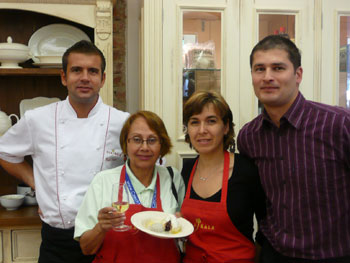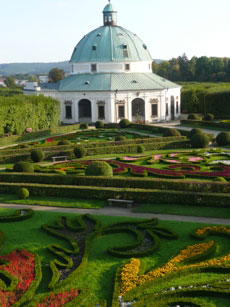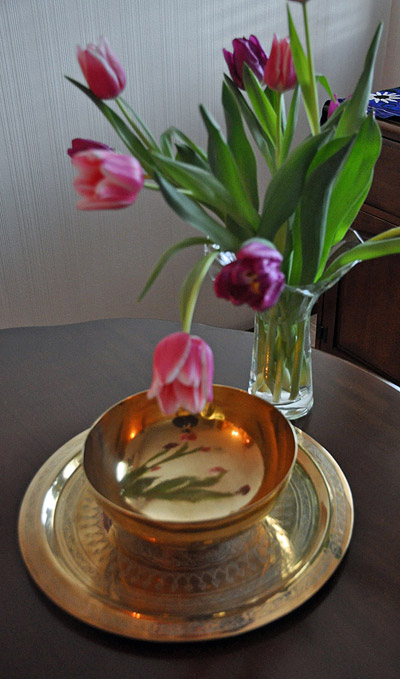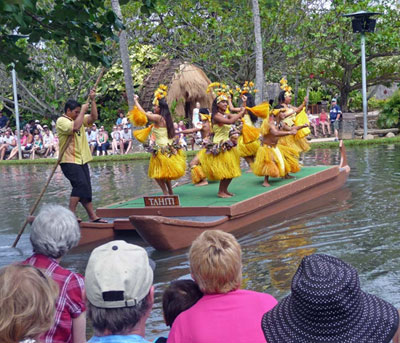
OAHU PC CANOE PARADE
Once the traditional playground for Hawaiian royalty, Waikiki continues to provide a range of island entertainment. So we readily and enthusiastically embrace Polynesian shows as part of our beach activities.
It’s a short walk from our condo to Kapiolani Park, where free concerts occur at a bandstand surrounded by gigantic century-old monkey pod trees. Every Sunday afternoon, the Royal Hawaiian Band performs; in July, a series of shows feature top Hawaiian uke entertainers, part of an ensemble of the world’s finest ukulele players.
An August festival celebrates traditional island dance with Queen Liliuokalani Keiki Hula Competition and Hawaii’s best slack-key guitarists performing all over Oahu. From mid-September to October, the Aloha Festivals present an array of activities, including parades and street parties.
Waikiki’s nightlife jumps with energy along its main drive. Several free performances occur along the beach at sunset. On an evening stroll, we attend one of these events in the garden of the Royal Hawaiian Hotel. On Mondays, this famous pink beach hotel holds its big luau. Some consider it the best on Oahu. Across the street, Jimmy Buffett, taking over Don Ho’s famous venue, plays at the Beachcomber Hotel. Jimmy sings distinctive favorites with his Coral Reefer Band, which now includes several talented locals. However, an extraordinary Hawaiian production awaits us next door.
The Magic of Polynesia is amazing! Sights and sounds of Polynesia surround us as a cast of twenty performers impart extraordinary mystery and power through rituals, chants and dance. A volcano erupts right on stage. When renowned illusionist John Hirokawa dramatically arrives, he waves his wand: objects appear and disappear; people vanish and suddenly reappear somewhere else entirely! Interspersed with knife and fire dances, John smiles, waves his wand again: a shiny sports car appears! Placed in what seems like inescapable traps, this magical master and Hawaiian cohorts escape and transform. Astounding pyrotechnics and lasers add to the total wonderment! John grins again, taps his wand and now a helicopter appears! Some objects evolve into something wondrously new. Casting spells, John’s assistant floats, a table takes flight and opening a box, a butterfly flutters upward and mysteriously dissolves…
The biggest luau show takes place at the Polynesian Cultural Center on Oahu’s north shore. Arriving by chartered bus, we immediately experience warm island hospitality in huts, meeting houses and amid grassy commons of six replicated villages. While others stick on tattoos, weave baskets and throw spears, we go native: playing Fijian rhythm instruments, joining an exuberant Maori Haka ceremony and sampling Tahitian soda bread. We also watch Hawaiian hulas, vigorous Tahitian huras, Tongan drumming techniques and comedic Samoans gathering and husking coconuts.
Emerging from these edifying entertainments spread over 42 lush acres, all gather to behold Rainbows of Paradise, an outrigger parade that winds along the picturesque waterway. Our own restful canoe ride retraces the route of this musical extravaganza. Disembarking, we enjoy a cultural overview of the Polynesian islands in the IMAX Theater. Wedding customs shown in this engaging production prepare us for that evening’s performance.
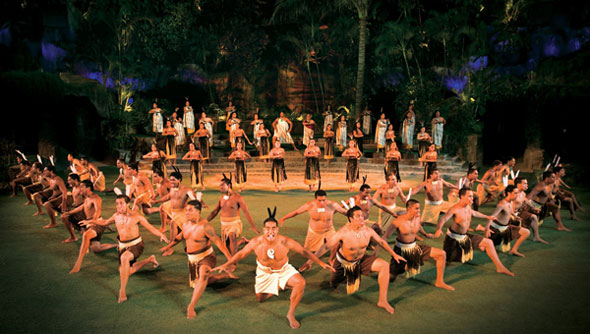
PCC - HA-MAORI-HAKA
The center’s lu’au proves fit for a King! Beginning with a reenactment of royal court pageantry, we feast on poi, mahi mahi, pineapple, purple sweet potatoes and coconut pudding before heading for ‘Ha, Breath of Life.’ This new theatrical spectacle provides an action-packed journey through Polynesia in an elaborate series of haunting, flamboyant and fiery dances. In island fashion, it’s also a saga showing the main character developing into manhood, meeting the perfect mate, wooing this lovely wahine, marrying and beginning a new family.
Oahu’s lilting melodies, enchanting dances and magical moments live on in our hearts.
